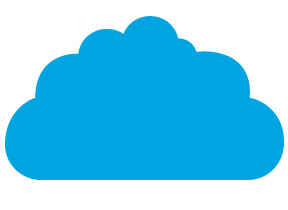The new open and social technologies may allow academics to have their cake and eat it, too. A professor can be a sage on a huge stage and remain the guide close at the student’s side.
The challenges faced by higher education around the world are daunting and cannot be met by the traditional institution-based education system. For the current model to meet the needs of future generations, we would need to build and fund thousands of new universities. And yet the past ten years have demonstrated that there is another way. Scalable education on the web is increasingly possible, largely through the use of commodity software that is easy to use and available freely or at low cost to anyone.
Consider: Stanford and MIT recently started offering free online courses, and both universities enrolled more than 100,000 users. In one Stanford course, on artificial intelligence, 25,000 users completed all required homework assignments and received a certificate for their participation.
Not only is online learning beginning to scale massively, but it is also beginning to do so at almost zero marginal cost. The expense of adding an additional student in a campus setting remains relatively stable. In online learning, however, the cost of adding one more user is often so close to zero that it can be ignored. Even the issue that seems to resist low-cost scaling the most—meaningful assessment, certification and recognition of learning—is starting to change. The Stanford artificial intelligence course offered certificates for those who completed the course work. MIT announced it will set up a separate organization, called MITx, to offer certificates for online learners. The Mozilla Foundation, the MacArthur Foundation, Peer 2 Peer University, and others are hard at work on developing a system of portable online “badges” that would help learners to demonstrate and share evidence of what they have learned in informal or formal settings.
We are approaching a tipping point where education and educators can use technology to reach almost every person on the planet inexpensively. However, the result may not look like the conventional university experience we recognize today. These are exciting times for educators, but it remains to be seen how these developments will change the structure of education, influence the purpose of institutions, and shape the role of the professor. These developments may feel threatening, but they also offer exciting opportunities to reach a much larger and broader audience with our lectures, to spend more time advising and mentoring students, and to improve the overall learning experience for all.
Massive Open Online Courses
Innovative professors at many universities have been experimenting with technology to scale the lecture experience. Often their experiments started in response to increasing numbers of on-campus students. For example, Virginia Tech Professor John Boyer uses virtual office hours, pre-recorded lecture snippets, and Twitter to teach a face-to-face “World Regions” course to 3,000 students. Once a week, he fills the largest lecture hall on campus, but the rest of the course takes place online. It quickly became obvious that the model he developed with his colleague Katie Pritchard could also accommodate thousands of additional online users, who log in to view the lectures or post questions during office hours.
While Boyer’s real passion remains the classroom experience, others are moving their entire courses online. The term “massive open online course”, or MOOC (coined by Dave Cormier and Bryan Alexander) is sometimes used to describe these types of courses, because they: take place online; are open in the sense that participation is typically free of charge and learning materials can be modified, re-used, and distributed to others; and reach massive communities of tens of thousands of learners.
MOOCs are a relatively new phenomenon, but they recently captured public attention when Stanford University launched a set of free online courses. Sebastian Thrun, one of the pioneers at Stanford, created the artificial intelligence course that attracted over 160,000 users (though only 25,000 finished the course). Inspired by this success he founded Udacity, a for-profit start-up that will use a similar model for online instruction, with the goal of making an entire computer science course available at no cost. Thrun’s Stanford colleagues Daphne Koller and Andrew Ng also participated in the first round of Stanford MOOCs and subsequently spun off Coursera, another for-profit start-up, which aims to provide a platform for other universities to host similar online courses.
MIT, open education pioneer and founder of the OpenCourseWare movement, announced in December 2011 the creation of MITx as an open and non-profit alternative to for-profits like Udacity and Coursera. MITx is currently offering its first course, “Circuits and Electronics”, which attracted large numbers of users, and is developing an opensource platform that anyone will be free to use. A number of other universities, including Harvard University and Georgia Tech, are paying close attention and developing their own massive, open, and online strategies.
A quick review of the key characteristics these MOOCs share will help us better understand what opportunities they offer to universities and professors.
Instruction is based on openly available content and resources
Open content lies at the core of these massive online courses. Typically, a series of video lectures, with short quizzes built in, make up the bulk of the instruction for users. This is good news for traditional universities, who already have vast amounts of high-quality teaching materials ready to share online. And because knowledgegeneration will continue to take place at universities, especially those that do advanced research, there will always be a need to update and revise materials. Since 2002, more than 250 universities in the OpenCourseWare movement have been publishing their academic materials openly on the Web and have shared materials from more than 15,000 courses in a wide range of disciplines and languages. These institutions are well positioned to add online-only courses to their open course work projects.
A number of online services already allow free hosting and streaming of instructional videos. Since the materials are openly licensed, the need for sophisticated access management is obviated, and the materials can thus be made freely available.
Interactions are largely peer-to-peer
There are not enough subject matter experts to meet the needs of learners, and education systems worldwide are straining to find enough qualified teachers. MOOCs recognize this fact by setting up informal Q&A systems that allow participants to engage with each other. In some cases where peer-to-peer interactions are not directly supported within an online course, informal learning communities can emerge spontaneously on separate platforms.
 Peer-to-peer does not necessarily mean all learners are at the same level, however. Many models attempt to harness the knowledge of more advanced learners to support beginners, and offer medals or badges to learners in recognition of their advancement. One of the key areas of exploration is how best to structure online interactions to facilitate interactions between beginner learners and advanced learners. Peer-to-peer interactions also generate new content to support future learning. Well-curated records of the most frequently asked questions and the best answers to those questions can be mined by new learners.
Peer-to-peer does not necessarily mean all learners are at the same level, however. Many models attempt to harness the knowledge of more advanced learners to support beginners, and offer medals or badges to learners in recognition of their advancement. One of the key areas of exploration is how best to structure online interactions to facilitate interactions between beginner learners and advanced learners. Peer-to-peer interactions also generate new content to support future learning. Well-curated records of the most frequently asked questions and the best answers to those questions can be mined by new learners.
Systems to support peer-to-peer learning on the Web are widely available at very low cost or without charge. A range of Q&A systems can be self-hosted; open education projects, including OpenStudy and P2PU, provide platforms for such interaction; and Google groups, Yahoo groups, Ning sites, and Moodle installations can also be used to structure peer-to-peer interaction.
Assessments and grading are handled automatically
Meaningful assessment of learning remains a challenge for MOOCs. That is one reason why most of the very large courses so far have focused on content areas that allow computable exercises. For example, in cases where students are expected to submit software programs, the quality of the work can be automatically evaluated by testing for expected outputs and measuring completion time. Other assessments commonly used in MOOCs are small, multiple-choice quizzes embedded in the video lectures that allow users to test comprehension before moving on to the next lecture.
As learning takes place online, data that captures learner activity will increasingly be used as a proxy for learning. Time on site, number of posts, and word counts of responses represent the most basic and earliest of these learning analytics, but over time open education systems will grow more adept at drawing evidence of learning out of the actions learners take in interacting with each other online. It will likely be a long time before automated quizzes and learning analytics can provide a sophisticated assessment of problem-solving and integrated skillsapplication abilities. Both sophisticated learning analytics approaches, as well as crowd-sourcing of peer-review, show promise but have not been tested on a large scale.
In the meantime, some MOOCs are considering including more traditional assessments to supplement learning analytics. These include tests taken though testing services with physical locations around the world or assessments of online portfolios by subject matter experts.
Learning is recognized, but not in traditional ways
While there are already some efforts underway to bridge the gap between informal learning communities to university credit, it may be a while until standard academic credit for open education learning is the norm—or it may never happen at all. Open education projects are hard at work designing alternative types of recognition. Peer 2 Peer U and the Mozilla Foundation have been collaborating on the development of an ‘open badges’ architecture, a system that will allow any open education program to offer badges recognizing learning accomplishments. These badges will be displayable on personal Web pages and will link back to the sites that issued them and to the materials the learners developed in earning the badge. Winners of the recent Digital Media and Learning competition are currently developing a wide range of applications that will use the badges infrastructure.
Many programs are experimenting with awarding non-credit certificates, a model used by many of the MOOCs. It is, however, an open question what weight these certificates will carry in the job market. Another model that seems to hold promise in this regard is the development and management of online learning portfolios. By posting the actual work done in learning—computer programs, web pages, essays and other direct evidence of learning—students can skip the degrees and certificates that signify learning and share their knowledge and skills directly with potential employers.
The technologies supporting such recognition systems are straightforward and available. Traditional institutions may have a role in offering certificates and other recognitions that would be viewed as legitimate in the labour market.
What will it be like to learn with these new approaches?
The learning will be more persistent, with content, peer relationships, and metrics extending well beyond the construct of a ‘course’ and spanning our current notions of institutions. Web technologies are rapidly dismantling many of the fundamental constraints that have governed higher education. Interactions in these new learning systems will not be limited by the confines of the traditional one-semester course. Learners will be able to “flash back” to introductory level courses for review, and “flash forward” to advanced level subjects to see how basic concepts are applied. In a project learning model, learners can be given an advanced challenge and work backward into prerequisite knowledge as needed, rather than slogging through the basics to get to problems that really interest them.
Through the peer-to-peer relationships built into these systems, learners may remain engaged with one another over the span of many years, instead of the fourteen weeks of a traditional course; learning metrics regarding peer support and collaborative skills can be assessed continuously across courses in open education systems; and learners build up networks of experts who they can return to for help in specific areas like statistics methods or writing.
Expertise will be earned and maintained through ongoing lifelong education, not conferred once and good for life. Open learning systems offer the possibility for the kind of continuous lifelong learning that will be necessary as the pace of technological and scientific knowledge development increases. Like athletes, learners will not just learn once, but will maintain a level of performance ability in their chosen field through ongoing study and participation in learning communities.
What is the role of the institution and the professor?
Interaction with subject-matter experts remains one of the non-commodity aspects of new open educational models like MOOCs and represents a clear opportunity for traditional institutions and professors. As universities and academics begin to recognize the opportunities for dramatically scaling up educational opportunity, they will look for ways to make their subject-matter expertise available in different ways. At the same time, they face competition from informal experts who may not work as professors but who have the required knowledge to help others learn.
Subject-matter experts still play an important role in MOOCs, but this role is likely to be very different from that of the traditional professor. Sebastian Thrun commented in the Chronicle of Higher Education on his experience of reaching 160,000 students that, “ having done this, I can’t teach at Stanford again. I feel like there’s a red pill and a blue pill, and you can take the blue pill and go back to your classroom and lecture to your 20 students. But I’ve taken the red pill, and I’ve seen Wonderland.”
One of the benefits of having an audience of tens of thousands of students is that it draws in other contributors who may not be willing to address a room full of a few hundred students. Professor Boyer was able to bring Burmese democracy leader and Nobel Peace Prize winner, Aung San Suu Kyi, into his lecture via a Skype call. Joi Ito invited a string of experts to participate in the Digital Journalism course he offered on Peer 2 Peer U to informal learners and registered students from KEIO University.
The backing of prestigious institutions is clearly a factor in attracting large numbers of students. Brand recognition is likely to remain a differentiating factor, but MOOCs also offer opportunities for professors at smaller institutions to establish themselves as great instructors. Jim Groom at the University of Mary Washington has been able to attract thousands of students (and a number of other institutions) to participate in a digital storytelling course he designed and teaches with a number of collaborators. Not all professors will be excited by Thrun’s vision of Wonderland, but MOOCs may offer opportunities for academics to have their educational cake and eat it, too, by being the sage on a huge stage while also being a guide who remains closely by the student’s side—through the power of open and social technologies.










